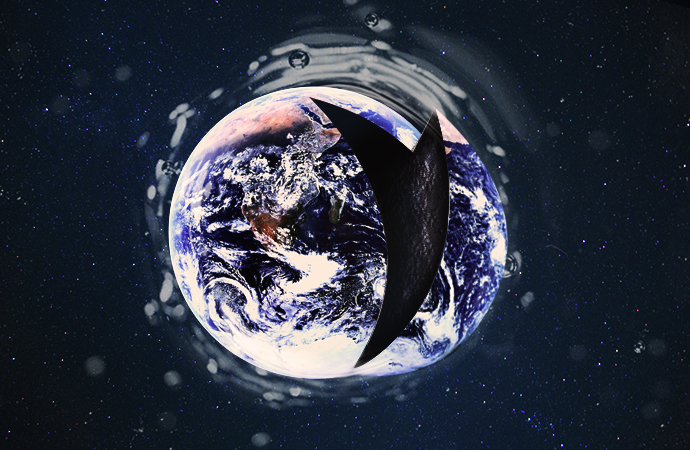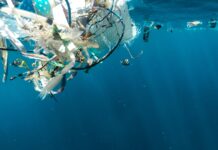Iron forms a unique constituent of enzymes and proteins that play an important role in life. Living cells use iron in a range of biological phenomena, such as metabolism, DNA replication/copy, and gene expression. On the other hand, iron has been detected in many exoplanets (planets outside the Solar System). A curious example is an extreme planet where it apparently rains iron. Daytime temperatures in this giant exoplanet increase up to 2400 °C, which is sufficient to evaporate metals. Not just exoplanets, the importance of iron dates back to the formation of terrestrial planets (Mercurius, Venus, Earth, and Mars).
Jon Wade, Hal Drakesmith, and their colleagues explored the contribution of iron bioavailability to the biosphere of the Earth by studying available scientific articles. Moreover, they took into account several events that affected geological history. They argued that creating a planetary core acts as a restriction on both the long life and arrangement of surface water on the crust, determining if the planet is habitable.
Wade and collaborators reported on the impact of different conditions of rocky planet development on the early content of iron and the capacity of the mantle to sustain surface water on these planets. On Earth, The Great Oxygenation Event was caused roughly 2.4 billion years ago by cyanobacteria (blue-green algae) that utilize a range of photosynthetic pigments. During this event, the increase in atmospheric oxygen lowered the quantity of soluble iron by gigatons ( one billion metric tons). Moreover, the event led to the development of potent evolutionary pressures, which transferred the leading supply of iron to biotic sources and not geologic sources.
The Great Oxygenation Event resulted in different infectious, scavenging, and interdependent behaviors. On the other hand, the multicellular property of eukaryotes (i.e., organisms with membrane-bound organelles) enables the recycling of iron within a particular organism. A review of previous literature suggested that the developments described above permitted living organisms to efficiently use a rare but important nutrient, i.e., iron.
Previous investigations suggested that the presence of plentiful soluble iron provided great benefits to early terrestrial life. However, its shortage after the Great Oxygenation Event was possibly a similarly essential factor of life complexity. This is because organisms gradually started becoming accustomed to fluctuating environmental conditions.
Of all micronutrient deficiencies, iron shortage is the most common in human beings. Moreover, it affects more than a billion individuals. Reports state that people with iron deficiency get protection against malaria and certain bacterial infections. Nevertheless, this shortage of iron affects immunity, slows down body growth, and causes anemia.
The researchers mentioned that together with the mass fraction of a metallic core, stellar compositions are possible noticeable features of rocky exoplanets. This emphasizes the ability of exoplanets to sustain living forms. They concluded that the quantity of iron in the mantle of an exoplanet could point towards its impact on protecting diversity and complex life forms.
References
Wade, J., Byrne, D.J., Ballentine, C.J., & Drakesmith, H. (2021). Temporal variation of planetary iron as a driver of evolution. Perspective, 118(00), e2109865118. https://doi.org/10.1073/pnas.2109865118
Ehrenreich, D., Lovis, C., Allart, R., Osorio, M. R. Z., Pepe, F., Cristiani, S., … & Zerbi, F. (2020). Nightside condensation of iron in an ultrahot giant exoplanet. Nature, 580(7805), 597-601. https://doi.org/10.1038/s41586-020-2107-1
Olejarz, J., Iwasa, Y., Knoll, A. H., & Nowak, M. A. (2021). The Great Oxygenation Event as a consequence of ecological dynamics modulated by planetary change. Nature Communications, 12(1), 1-9. https://doi.org/10.1038/s41467-021-23286-7
Muckenthaler, M. U., Rivella, S., Hentze, M. W., & Galy, B. (2017). A red carpet for iron metabolism. Cell, 168(3), 344-361. https://doi.org/10.1016/j.cell.2016.12.034
Camaschella, C. (2019). Iron deficiency. Blood, The Journal of the American Society of Hematology, 133(1), 30-39. https://doi.org/10.1182/blood-2018-05-815944
Bundi, C. K., Nalwoga, A., Lubyayi, L., Muriuki, J. M., Mogire, R. M., Opi, H., … & Atkinson, S. H. (2021). Iron deficiency is associated with reduced levels of Plasmodium falciparum-specific antibodies in African children. Clinical Infectious Diseases, 73(1), 43-49. https://doi.org/10.1093/cid/ciaa728
Illustration by Dana Dumea





